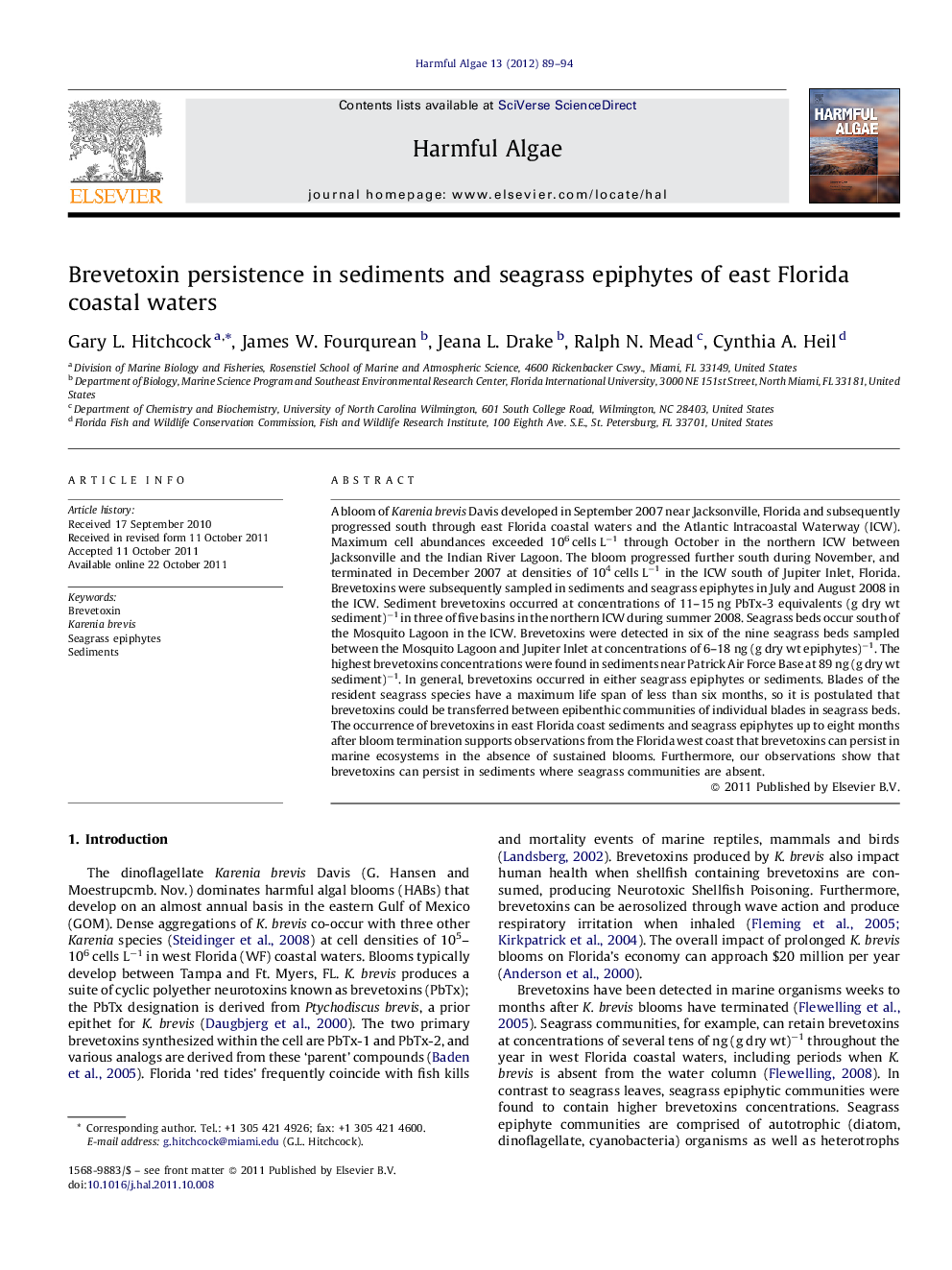| کد مقاله | کد نشریه | سال انتشار | مقاله انگلیسی | نسخه تمام متن |
|---|---|---|---|---|
| 4545660 | 1626957 | 2012 | 6 صفحه PDF | دانلود رایگان |

A bloom of Karenia brevis Davis developed in September 2007 near Jacksonville, Florida and subsequently progressed south through east Florida coastal waters and the Atlantic Intracoastal Waterway (ICW). Maximum cell abundances exceeded 106 cells L−1 through October in the northern ICW between Jacksonville and the Indian River Lagoon. The bloom progressed further south during November, and terminated in December 2007 at densities of 104 cells L−1 in the ICW south of Jupiter Inlet, Florida. Brevetoxins were subsequently sampled in sediments and seagrass epiphytes in July and August 2008 in the ICW. Sediment brevetoxins occurred at concentrations of 11–15 ng PbTx-3 equivalents (g dry wt sediment)−1 in three of five basins in the northern ICW during summer 2008. Seagrass beds occur south of the Mosquito Lagoon in the ICW. Brevetoxins were detected in six of the nine seagrass beds sampled between the Mosquito Lagoon and Jupiter Inlet at concentrations of 6–18 ng (g dry wt epiphytes)−1. The highest brevetoxins concentrations were found in sediments near Patrick Air Force Base at 89 ng (g dry wt sediment)−1. In general, brevetoxins occurred in either seagrass epiphytes or sediments. Blades of the resident seagrass species have a maximum life span of less than six months, so it is postulated that brevetoxins could be transferred between epibenthic communities of individual blades in seagrass beds. The occurrence of brevetoxins in east Florida coast sediments and seagrass epiphytes up to eight months after bloom termination supports observations from the Florida west coast that brevetoxins can persist in marine ecosystems in the absence of sustained blooms. Furthermore, our observations show that brevetoxins can persist in sediments where seagrass communities are absent.
► A Karenia brevis bloom developed in the Intracoastal Waterway along the east Florida coast in summer 2007.
► In summer 2008 brevetoxins were found in sediments of the northern Intracoastal Waterway.
► Brevetoxins were also found in summer 2008 within seagrass epiphytes in the southern Intracoastal Waterway.
► Generally, brevetoxins were present in either sediments or seagrass epiphytes at any station.
Journal: Harmful Algae - Volume 13, January 2012, Pages 89–94